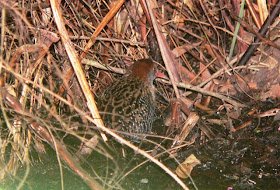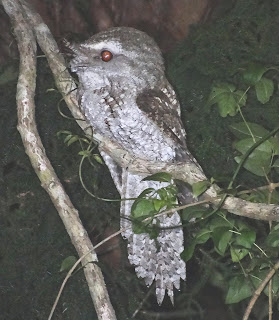 |
| Noisy Pitta |
Little Yabba Creek in the Sunshine Coast hinterland, in the foothills of the Conondale Range, has long been one of my favourite spots. Birds that showed during a three-day camping trip there this week included Marbled Frogmouth (
see following post), Noisy Pitta, Wompoo Fruit-Dove, Rose-crowned Fruit-Dove, White-eared Monarch, Pale-yellow Robin, Russet-tailed Thrush, Paradise Riflebird and Logrunner.
 |
| Noisy Pitta |
I estimated between 12 and 15 Noisy Pittas were in dry rainforest within a 500-metre radius of the Charlie Moreland camping ground. I think this is one of the best birding sites in south-east Queensland; for instance, I saw a dozen or so Paradise Riflebirds this week without even looking for them.
When I first came here in 1971 (as a radical student environmentalist!) the camping ground was a small clearing near this pool. Now, Charlie Moreland is the most popular camping ground in the Sunshine Coast hinterland, although quiet enough during the week if school holidays are avoided.
Some of the birds (and mammals) this week in the following images.
 |
| Wompoo Fruit-Dove |
 |
| Wompoo Fruit-Dove |
 |
| Cicadabird female |
 |
| Crimson Rosella |
I've noted
in an earlier article that numbers of Crimson Rosella and Satin Bowerbird in the Sunshine Coast region had fallen sharply since the 1970s, possibly due to subtle climage changes. A few of each were still about this week.
 |
| Satin Bowerbird |
 |
| Emerald Dove |
 |
| Pacific Baza |
 |
| Pale-yellow Robin |
 |
Paradise Riflebird
|
 |
| Red-necked Pademelon |
There were plenty of Red-necked Pademelons about and a few Red-legged Pademelons - a sound indication of the good weather conditions over the past couple of years.
 |
| Regent Bowerbird |
 |
| Spectacled Monarch |
 |
| White-eared Monarch |
I found White-eared Monarch at five sites around the camping-ground, and plenty of Spectacled and Black-faced Monarchs were seen as well.
 |
| Topknot Pigeon |

















































